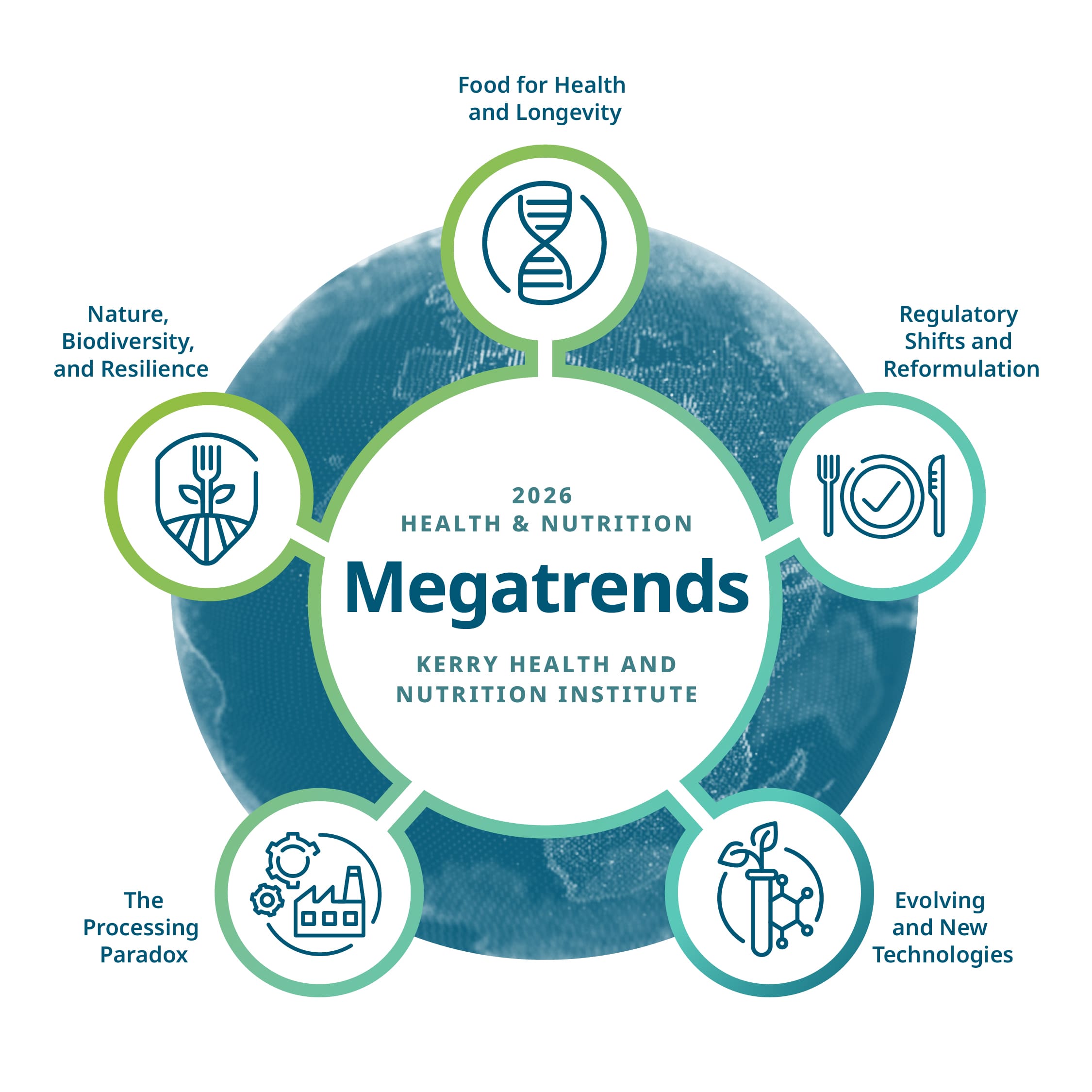The plant-based meat and dairy alternative markets are growing and innovating to capitalize on global consumer demands driven by health, wellness, and sustainability interests. Plant-based is no longer a niche market for those with dietary restrictions and as a result, expectation for convenience, taste, quality maintenance and shelf-life are table stakes.
Consumers are thinking about food safety and food waste in plant-based meat alternatives

Consumer concern for food safety has increased, with 60% of consumers saying they are more concerned about food safety due to the COVID-19 pandemic (2021 Kerry Proprietary Insights– Food Safety Fundamentals). Specifically, 49% of consumers are concerned about food safety in plant-based meat alternatives (2021 Kerry Proprietary Insights – Food Safety Fundamentals). Plant-based meat and dairy alternatives topped the list in terms of concerns, outranked only by fresh and processed meat. This increased concern can be attributed to consumer unfamiliarity with plant-based products. Consumers have limited experience with plant-based meat alternatives, which can result in inconsistent quality and taste. Product recalls are another factor with plant-based products, with media publicity raising public awareness and concern.
Sustainability and avoiding artificial preservatives are also top-of-mind when it comes to plant-based products. “No artificial preservatives” is a top claim consumers look for when purchasing plant-based products (Innova 2021). Consumers are paying closer attention to product labels than ever before. In a previous consumer research survey, 64% of plant-based consumers stated they read nutritional labels (Kerry Proprietary Insights 2019 – Meat: The Challenge).
Finding the balance with sustainability (reduced food waste) and ingredients that align with consumer’s health and wellness goals can be challenging. Now is the time for plant-based producers to rise to this challenge as increased market growth continues.
Plant-based meat alternatives have different food safety challenges than meat and require different solutions
Extensive food safety data, shelf-life data, and predictive models for food protection exist for meat and poultry products, but the same cannot be said for novel plant-based foods. It’s important to understand the technical challenges to formulate safe and quality plant-based meat alternatives. These technical challenges and considerations can include:
- Plant-based ingredients have different levels and forms of macronutrients (carbohydrate, fat, protein) than their animal counterparts. For instance, the primary carbohydrate in milk is lactose, in meat it’s glycogen, and in pea, soy, and mushroom it’s various starches and oligosaccharides. This can lead to variation in the types and resultant levels of microorganisms able to thrive in the product. This means that threshold levels for what is considered “spoilage” (e.g. 106 CFU/g) traditionally agreed upon for meat and poultry products may not be appropriate for plant-based products. In a survey of commercially available U.S. plant-based meats, starting bacterial populations varied from non-detectable to >107 CFU/g at the time of purchase (Stafl 2020). This level of variability between products is significant and further emphasizes that there is more we need to understand about these products.
 The array of ingredients used in plant-based foods can bring different microbial loads. Plant-based products typically have higher diversity in their ingredient lists than animal products, which consist mainly of one major raw ingredient (e.g. milk, beef). Including ingredients with high microbial loads (e.g. yeast extract, spices) to mimic meat flavor can introduce different bacteria into plant-based meat alternatives than those traditionally found in animal products.
The array of ingredients used in plant-based foods can bring different microbial loads. Plant-based products typically have higher diversity in their ingredient lists than animal products, which consist mainly of one major raw ingredient (e.g. milk, beef). Including ingredients with high microbial loads (e.g. yeast extract, spices) to mimic meat flavor can introduce different bacteria into plant-based meat alternatives than those traditionally found in animal products.- The U.S. regulatory bodies governing plant-based foods and animal-based meats differ (FDA and USDA, respectively). With the FDA, a minimum cooking temperature of 135°F is suggested. For animal-based meats, the USDA recommends a minimum cooking temperature of 160°F for beef products and 165°F for poultry products. This could lead to confusion or inconsistent “best practices” being carried into consumer homes, with some consumers treating plant-based meats like meat and some like other foods. Manufacturers must therefore educate on what “best practice” is for their protein. Cooking to temperatures 145-165°F was shown to kill Gram-positive and Gram-negative pathogens at equal rates in beef- and plant-based burgers, suggesting cooking guidance for animal products could be applicable to plant-based analogs.
- Many legacy technologies (curing, smoking, carcass washing, fermentation) used by meat and poultry processors have not been vetted or are non-transferrable to plant-based meat alternatives. Nevertheless, some learnings from meat can be applied to their plant-based counterparts. For example, ground or ground/formed products (i.e. products with additional handling) will have higher microbial counts than “whole muscle” products.
From an industry perspective, ingredient suppliers are often testing antimicrobial ingredient efficacy and product shelf-life in a lab environment which may not correctly mimic the specific production environment factors that are impacting a plant-based meat alternative’s ability to meet its shelf-life and safety goals. This means that microorganisms impacting the antimicrobial ingredient efficacy and plant-based shelf life may differ from findings based on lab or pilot-plant produced product trials. Product manufactures should consider testing in their production environment early in the product development process.
Learn more about unique food protection challenges and solutions for plant-based foods in our webinar Reducing Food Waste: Optimising Safety and Sustainability
The solution is an integrated approach
Taking an integrated approach to food protection in plant-based products is critical as these products continue to become mainstream. A science-backed approach to formulation with application and substrate-specific hurdles to avoid early spoilage and food safety risks is key as consumers demand quality and convenience.
This means understanding the specific microbes a plant-based meat is exposed to from ingredients or during production, the packaging used for a specific product and how well it offers shelf life protection, and selecting the appropriate ingredients that can solve these unique challenges.
Ensuring food safety is at the core of new product development will always be in the consumer’s best interest and will lend well to market success for plant-based meat manufacturers.

 Sarah Engstrom worked as Principal Scientist in Food Protection & Preservation with Kerry, where she works to develop and apply clean-label technologies for improving shelf-life and safety of foods. She holds M.S. and Ph.D. degrees in Food Science from the University of Wisconsin.
Sarah Engstrom worked as Principal Scientist in Food Protection & Preservation with Kerry, where she works to develop and apply clean-label technologies for improving shelf-life and safety of foods. She holds M.S. and Ph.D. degrees in Food Science from the University of Wisconsin. 

